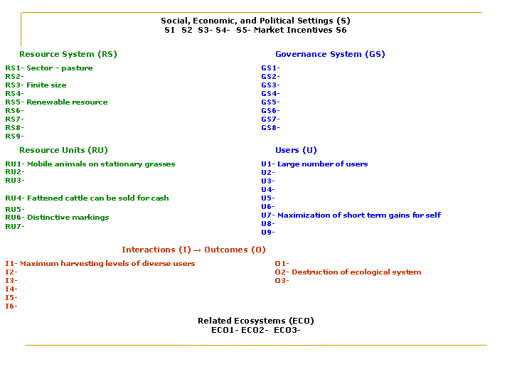| front |1 |2 |3 |4 |5 |6 |7 |8 |9 |10 |11 |12 |13 |14 |15 |16 |17 |18 |19 |20 |21 |22 |23 |24 |25 |26 |27 |28 |29 |30 |31 |review |
 |
Translating Hardin‘s his metaphor into a theory requires four
assumptions:
(1) no governance system is present (no GS) related to the resource
system;
(2) the mobile individual resource units (RU1; the animals grazing
on the pasture) are the private property of each pastoralist
(4) a sufficient number of users (large U1), given the size of the
pasture, are using the pasture to adversely affect its long-term
productivity;
(5) the resource users make decisions totally independently, (no
communication) without any local leadership or shared norms (no U5
or U6).
Hardin then posits that individuals will pursue short-term, material
benefits for themselves and ignore immediate consequences for others
and long-term results for all. These assumptions about second-tier
variables lead to a prediction of severe over-harvesting.
Hardin’s prediction is consistent with contemporary game theoretical
predictions for same combination of variables.
|